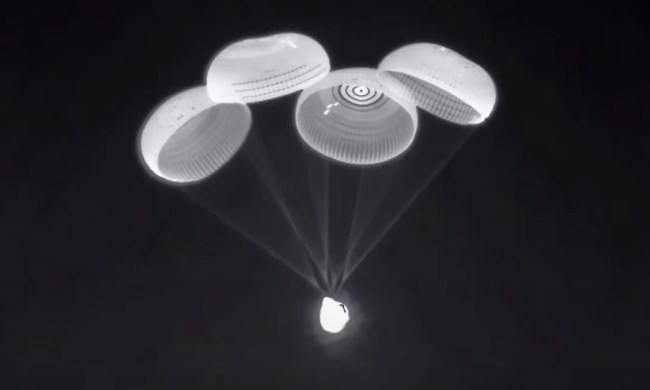SpaceX is just days away from its historic joint mission with NASA to the International Space Station, with the final preparations now underway.
Nudging the excitement dial up toward 11, the commercial space company on Monday tweeted a couple of photos of the Crew Dragon arriving at Launch Complex 39A at the Kennedy Space Center in Florida — the starting point for its much-anticipated launch on Wednesday, May 27.
The final step will be for the team to carefully place the capsule on top of the SpaceX Falcon 9 rocket that will take it to space.
The Crew Dragon has arrived to Launch Complex 39A!
This spacecraft will carry @AstroBehnken and @Astro_Doug to the @Space_Station when it launches atop a @SpaceX Falcon 9 rocket on May 27, at 4:33 p.m. ET: https://t.co/yvfOCG49U8 pic.twitter.com/Tdtdaucdef
— NASA’s Kennedy Space Center (@NASAKennedy) May 18, 2020
The Demo-2 mission is gaining much attention among space fans as it’ll be the first time for astronauts to use the Crew Dragon capsule. It’ll also be the first astronaut launch from U.S. soil since NASA retired the Space Shuttle program in 2011.
Astronauts Bob Behnken, 49, and Doug Hurley, 53, will be aboard the spacecraft. Both are currently in isolation ahead of the mission, and have been tweeting about some of their preparations leading up to the groundbreaking trip.
We are getting closer to #LaunchAmerica! @Astro_Doug gives us a glimpse as to what he and @AstroBehnken are doing in the weeks leading up to the @SpaceX Crew Dragon launch on May 27. pic.twitter.com/eJRGNnYWm2
— Johnson Space Center (@NASA_Johnson) May 12, 2020
The Crew Dragon, which can carry up to seven people, is based on the design of SpaceX’s Dragon cargo spacecraft that made 20 successful supply trips to and from the ISS between 2012 and April 2020, when it made its final outing.
Now it’s the Crew Dragon taking center stage, carrying astronauts and cargo to the orbiting outpost around 250 miles above Earth.
The spacecraft, as you would expect, has been thoroughly tested, overcoming various challenges along the way. Last year the Crew Dragon achieved a successful crewless test run, docking with the space station before returning to Earth.
Assuming everything goes according to plan, the mission will also be a big stepping stone to SpaceX’s proposed space tourism service that would see high-paying space travelers heading to the ISS for a once-in-a-lifetime vacation.


